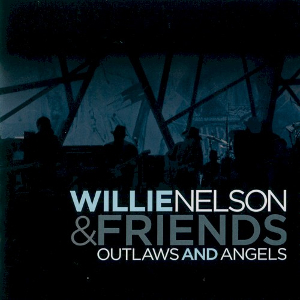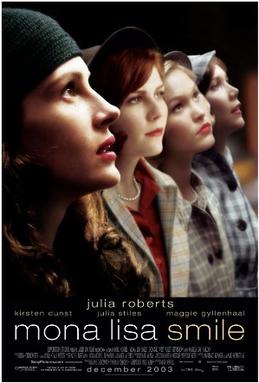In Search Of Heroes Of The Great
American Hispanic Night-Mi Hombre Senor Zorro-The ‘Z’ Man Of My Youthful Dreams-Antonio
Banderas’s “The Mask Of Zorro” (1998)-A Film Review
DVD Review
By Si Lannon
The Mask Of Zorro, starring Antonio
Banderas, Catherine Zeta-Jones, Anthony Hopkins and assorted sleaze-ball
Spanish dons and their senoras and senoritas, 1998
I have made no secret here or in
private conversations that in my youth, my childhood really, I was crazy to
watch the Zorro half hour on 1950s
black and white television. For a reason that only a few people knew then,
mostly family, and excluding my corner boys, some of who work for this
publication, and whom I grew up with in the heavily working- class Irish and
some Italian neighborhood of the Acre in North Adamsville a suburb south of
Boston. I suppose every family has its family secrets, its skeletons in the
closet like some looney grand aunty up on the batty attic, a brother, a hermano
in home speak, who has spent more time in jail for various armed felonies than
on the outside, that some cousin was in the vernacular of the day in our family
at least was “different” meaning then a “fairy, fag” you know what I mean and
today proudly LGBTQ, a young female relative who also in the code words of the
day had to travel to “Aunt Emmy” for a while, meaning that she was pregnant out
of wedlock and had to leave town to avoid family disgrace and dagger neighborhood
dowager grandmother eyes probably never to come back.
In my family the deep dark secret
which also reveals in passing why I loved Zorro as my youthful hero was that my
mother was a Latina, Hispanic, you know from Mexico whose last name was Juarez,
Bonita Juarez. No big deal right, now anyway although in the age of the long
knives, in the age of Trump and all the animosities he has helped stir up,
bring to the ugly surface of American life, that may no longer be true. But
back then, back in 1950s growing up Irish-Italian Acre that was a no-no. The
way around it devised by my parents was that sweet Bonita was “passed off” as
Italian. An entirely respectable ethic designation in a town that drew Italians
back around the turn off the 20th century to work the granite
quarries that dominated the topography of the landscape (that work died out
with the exhaustion of the quarries to be replaced by a booming shipbuilding
industries which by the 1950s has in their turn faded this time by off-shore
outsourcing and eventual departure which explained a lot about the wanting
habits of we corner boys in the 1950s while other working class towns were
observing something of a golden age-also mainly gone now with globalization).
While there were names, derogatory names, for Italians in some Irish
working-class homes in the neighborhood there was enough intermixing to level
things off.
Almost universally though since
there were absolutely no Hispanic families in the whole town the normal terms
of abuse applies-spics, wetbacks, braceros, and the like. My father could not
stand for that and even his relatives in the neighborhood believed my mother
was from Italy. She had come up to California from Mexico during World War II
with her family to work the grape and melon fields and my father stationed at
Fort Ord at the time met her at a USO dance and wooed her after that. Since
Bonita’s English was halting she was forbidden to speak Spanish when others
were around. The only way any corner boys knew that she was Spanish was in high
school when in ninth grade my best friend Jack Callahan had been taking Spanish
and had come to the house unannounced and heard her speaking that language and
not Italian. Naturally asking what gives and I told him and from there to the
rest of the guys who hung around Tonio’s Pizza Parlor. [In the interest of
today’s seemingly compulsory transparency statement Jack Callahan has not only
occasionally written in this publication but has been a substantial financial
backer-Greg Green]
The corner boys when they found out
since we were “brothers” today hermanos were pretty cool about the whole thing
since she was my mother and that counted a lot even when we were at civil war
with them, con madres. In general though it was not until many years later
after Bonita passed away that people became aware of her nationality in a time
when such things were more openly okay-even in the Acre.
Secrets aside I loved Zorro the same
way my corner boys loved say white gringo good guys, avenging angels like Wyatt
Earp or the Maverick boys from the television our main source outside of the
movies from having characters we could identify with. Swashbuckling Zorro
taking on all-comers, bad ass gringos especially but also batos locos paid
soldiers and other scumbags and of course the oppressor hombres-the mainly
Spanish dons who had the huge land grants from the Spanish kings when
California was part of the fading Spanish Empire and later after formal
independence and creation of a Mexican state who gouged the peasantry into the
ground to maintain their freaking luxurious lifestyles. I would have to keep my
devotion something of a secret although in general Zorro was a positive figure
among the television-watching corner boys.
I was therefore very interested in
doing this review of The Mask of Zorro
when site manager Greg Green decided that enough was enough as Mexican
Nationals, immigrants, citizens, hard-working peoples were being bashed for no
good purpose by the Trump unleashed dark alt-right-Nazi-fascist-white
nationalist cabal and had to be defended on all fronts including popular
culture-including films. And in a very definitive way-beyond the obvious
romance between Zorro, played by a youthful Antonio Banderas and his lovely
senorita and soon to be marida and madre of his child, Elena, played by
drop-dead beautiful Catherine Zeta-Jones-this film shows a heroic and honorable
side of the Mexican saga-of cultural super-heroes among the oppressed peoples
of the world.
Here is the way the thing worked on
this one although one can take the production to task for not have more
Hispanics, Latinos, etc. in key roles like Elena, who could have worthily been
played by Penelope Lopez, and certainly Zorro, the elder, played by venerable
and ubiquitous high-toned Brit actor Anthony Hopkins could have had a better
casting. The elder Zorro has a running battle in the Mexican independence
struggle with the soon to be departed Spanish viceroy, a real bastard whose
name is legend so no need to give him some human surname over the way the peasantry
and others were treated by him. More importantly over the elder Zorro’s wife
and daughter since that msl hombre viceroy was smitten by her. Eventually the
bastard was the cause of the mother’s death and the elder Zorro’s imprisonment
leaving the field clear for him to raise that daughter, Elena, when going back
to Spain in comfort and culture.
Then fast forward twenty year later
and the bastard returned with Elena and with the idea of turning via those
well-off land grant Dons California into an independent republic by stealth and
cold hard cash to the Mexican leader Santa Ana, known as a villain in U.S.
history via the Alamo and Jimmy Polk’s Mexican War adventure. The one guys like
young Abe Lincoln and Henry avid Thoreau couldn’t stomach. Enter a rejuvenated
elder Zorro who nevertheless is too old to go mano a mano with the bastard and
his hired thugs. Through serious trial and error he trains a new generation
Zorro, played by Banderas, to lead the struggle against the returned kingpin
oppressor and let the peasantry live off the their lands in some peace. Once
our new Zorro finishes his basic training he is off and running to woo the
lovely Elena, tweak the bastard, fight a million sword fights, woo the lovely
Elena, fight a few million more sword fights, and well you know the “and” part
by now. A most satisfying film which only rekindled my love of the sacred
youthful character-thanks young and old Zorro.



